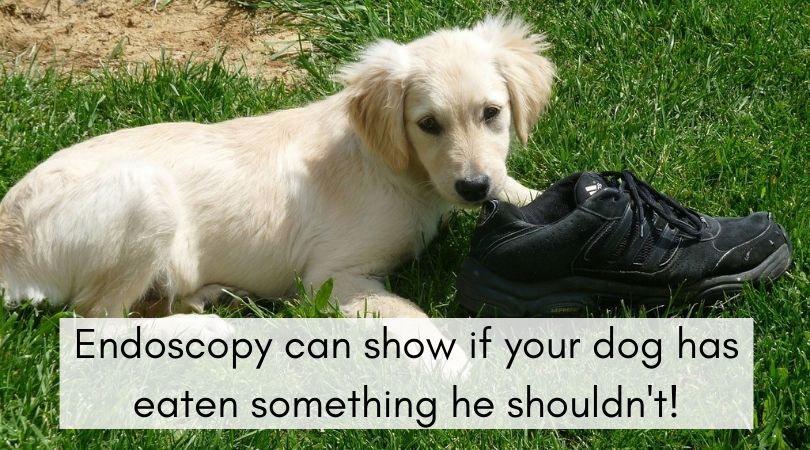If your dog becomes sick, the source of their ailment isn’t always obvious. Maybe your veterinarian suspects there is an internal problem, but the exact source can be tough to pinpoint. Surgery could be an option, but that can require a lengthy recovery period.
In recent years, endoscopy has become available in the veterinarian community. It’s less invasive than surgery, can help determine a diagnosis, and is usually performed outpatient so your dog can go home the same day.
An endoscope is a flexible, tube-shaped device that fits into your dog’s mouth or other body opening. It has a light and camera on the end, which project your dog’s insides on a separate monitor so your veterinarian can see inside your dog’s body. This makes it easier to detect early stage cancers like lymphoma or gastrointestinal disorders like irritable bowel syndrome. It can also see any strange things your puppy may have eaten and that may be causing a blockage.
Here’s why your veterinarian might recommend an endoscopy.
Why Your Dog Might Benefit from an Endoscopy
Unexplained weight loss, unusual lumps, or continued gastrointestinal problems that cause vomiting and diarrhea are typical reasons for a recommended endoscopy.
First, your veterinarian will give your dog a thorough checkup. This may include bloodwork and/or an ultrasound. These can also help discover the source of internal issues, but sometimes it’s tough to see growths or other problems with these diagnostics alone.
That’s where endoscopy can help. It can show internal growths, as well as if your dog has an internal blockage from eating a sock or other foreign object.
An endoscopy can help your veterinarian make the best diagnosis in the least invasive manner possible.

What to Expect If Your Dog Has an Endoscopy with Crown UrgentVet
As you may expect, this procedure requires anesthesia. The preparations for anesthesia usually involve a blood workup to make sure your dog’s organ systems are able to process the anesthetic. You’ll likely be instructed to fast your dog for a certain amount of time ahead of the endoscopy procedure so that they have an empty stomach.
When your dog comes into the animal hospital, during the procedure we monitor their pulse and temperature. Then, we’ll give your pet anesthesia and insert the endoscope. Watching on the monitor, the veterinarian can see your dog’s organs and can assess to see if anything appears abnormal.
We can examine the esophagus, the stomach, and into the small intestine (part of the GI tract.) We’re able to also use tiny forceps to take tissue samples which we can test for cancer or GI issues.
In the case of IBS or early stages of cancer, we can suggest further treatment options.
Many veterinarians are using endoscopy to remove foreign objects. Whether your dog swallowed a sock, a string, a lollipop stick, or anything else that could create a blockage, using an endoscope with forceps may save your pet’s life.
After the procedure, your pet rests, the anesthesia wears off, and you can take your dog home. Generally, there are no days of rest or restricted activity required as there are after procedures such as traditional surgery. Most pets recover quickly.
As you can see, endoscopy is efficient and less invasive than certain other traditional diagnostics or surgeries so your dog can recover faster. If your veterinarian recommends endoscopy, you can discuss the reasons why and the best preparation for your dog: just reach out to us!

